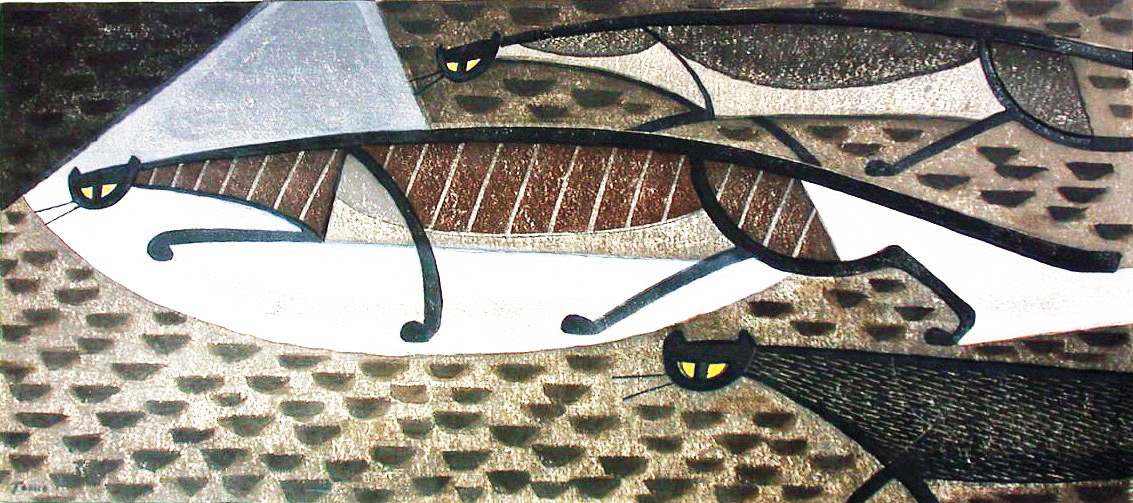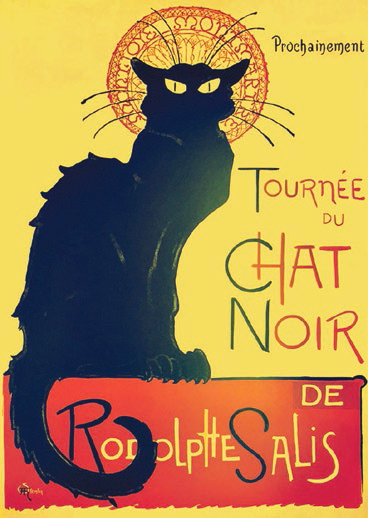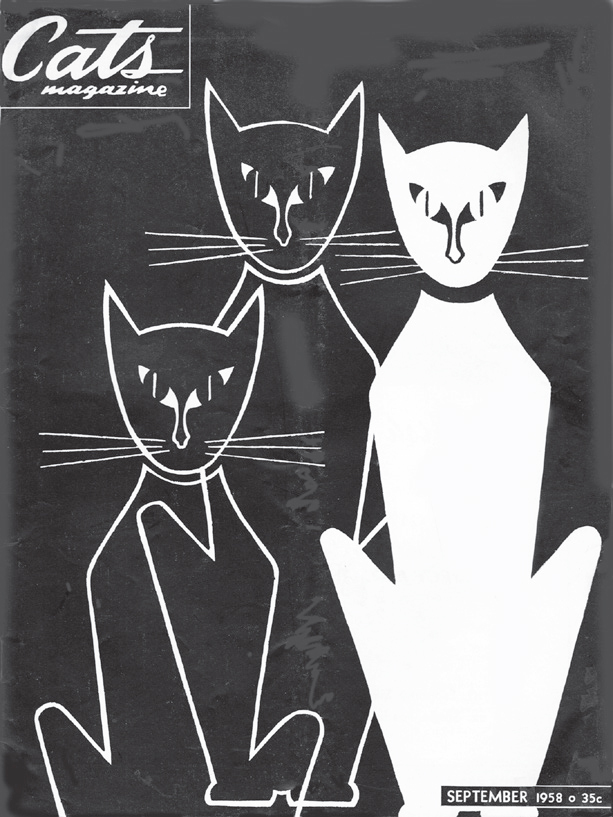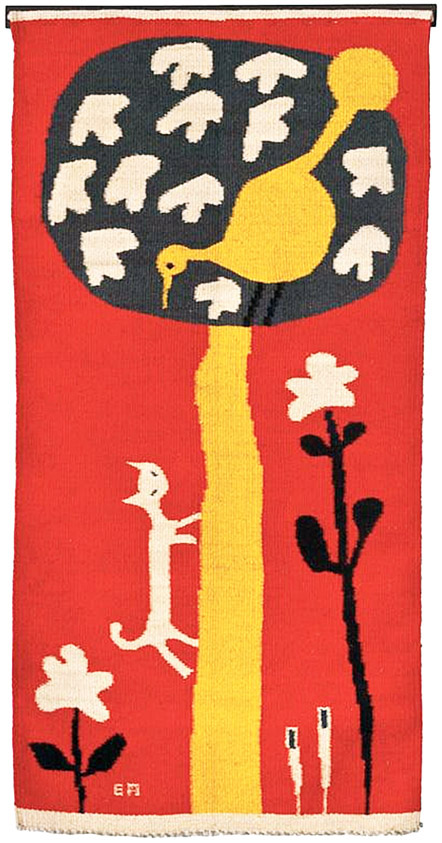Sophisticats - Page 2
 |
|
|
"Often mid-century modern is serious, but with a little bit of whimsy," she says. "Cats, they're both. One moment cats could be looking into your eyes, and you go back centuries. What are they thinking? And the next second they're chasing a butterfly, looking like a kitten."
It's the simplicity of the cat's form that attracts Donna Mibus, another contemporary artist whose Shag-inspired prints often feature felines. The black cat, she says, "fits the modern theme so well because he just seems so sleek and modern in his lines. I just love him."
"It's that the lines of the cat complement whatever else is in the living room," she says. "There are the plants and the chair. You need something a little more organic. That's going to be the cat."
Another neo-mid-century modern artist who was much inspired by Shag is El Gato Gomez, who named herself after a cat. Many of her paintings have featured the feline form. "I tend to focus on cats just because of the aesthetic of cats. Cats are so much cooler than dogs," she said in an interview a few years ago.
 |
"I saw a painting that I liked on eBay," El Gato said of the genesis of her art. "It was of an elongated black cat. I fell in love with it, but I couldn't afford it. So I decided to paint one for myself, and it came out so well I kept painting and painting and painting them."
Cats of course have been pictured in art going back to the days of mummies. The great 18th century painter Chardin sometimes included a cat in his still-life paintings (as in 'Still Life with Cat and Fish' from 1728), images that evoke the brevity of life.
Theophile Steinlen's late-19th century litho of a spiky-furred alley cat for the Paris cabaret 'Le Chat Noir' portrayed the cat as wild, dangerous, a creature of the streets. Indeed, scientists tell us, the pet cat, as we know him or her today, is not really a pet.
Cats are, rather, "the last animals on earth to be domesticated…if indeed they have been," science writer Jake Page says in his book Do Cats Hear with Their Feet?
 |
"Practically any house cat, to this day, can wander forth and make a pretty satisfactory living either as a feral neighborhood cat with the occasional handout, or as a lone hunter in the wild. Thus the domestic cat is not a true domesticate, one might say," he writes.
By the mid-20th century, however, cats were being domesticated in a way they had not been before.
'Indoor' cats were becoming the new norm, thanks to technology, new attitudes towards domestic animals, and concern for wildlife that was threatened by ravenous house cats. There was also concern about cats falling to predators, as suburbia spread its web of residential streets into hillsides where coyote and fox—and bobcat and mountain lion too—roam.
"Keeping cats indoors all the time was not possible—nor was it even a goal—until several important 20th century innovations: refrigeration, kitty litter, and the prevalence of spaying and neutering," writes Alley Cat Allies, a cat advocacy group based in Maryland.
 |
The development of canned cat food early in the century helped owners keep indoor cats fed without the need for the cats to hunt birds. Even more importantly though, Alley Cat Allies writes, was the invention of kitty litter in 1947.
"Up until the 1950s, cats roamed American neighborhoods freely, using the great outdoors as their litter area. Pans filled with dirt or newspaper were used indoors by a few cat owners, but it wasn't until the first clay litter was accidentally discovered in 1947, and the subsequent marketing of the Tidy Cats brand in the 1960s, that litter boxes really caught on. With the invention of cat litter, cats rocketed to popularity as indoor pets, but their outdoor survival skills remain," the group writes.




